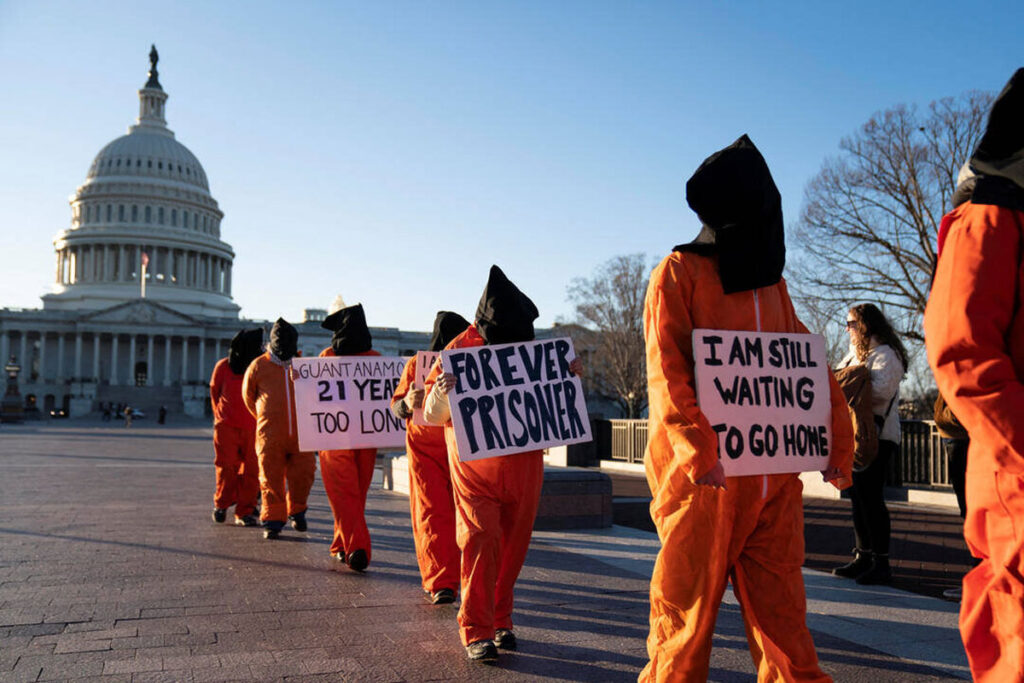Guantanamo Bay, the infamous U.S. detention center, has long been a symbol of the country’s war on terror, housing detainees accused of terrorist activities and other security threats. Under the Obama administration, there was a push to reduce its population, with the goal of closing the facility and shifting detainees to other locations. But as we move further into the presidency of Donald Trump, the future of Guantanamo Bay has taken a dramatic turn.
A Shrinking Guantanamo Bay: Obama’s Efforts
In the final weeks of President Joe Biden’s term, the U.S. government managed to transfer a significant number of prisoners out of Guantanamo Bay, leaving only 15 detainees behind. The costs associated with maintaining this facility have long been a point of contention. The Washington Post editorial board highlighted the absurdity of keeping the prison open, given its annual operating cost of around $500 million, or roughly $33 million per detainee. Despite these efforts, the idea of Guantanamo Bay being closed or downsized is now overshadowed by President Trump’s new plans.
Trump’s Vision for Guantanamo Bay
Unlike his predecessor, Trump has outlined a vision that would drastically expand Guantanamo Bay’s role in U.S. immigration policy. He has proposed turning the facility into a detention center for “criminal illegal aliens,” focusing on apprehended migrants who pose a threat to U.S. security. Trump has instructed the Pentagon and the Department of Homeland Security to prepare for a massive 30,000-person facility to house these individuals.
Trump emphasized that Guantanamo Bay is the ideal location for such a facility. Defense Secretary Pete Hegseth echoed this sentiment, stating that the base is “a perfect place” for detaining migrants. The notion of using this site to house tens of thousands of people raises several questions, however, especially about the military’s role in the operation and the costs involved. As of now, these details remain unclear.
The Controversy and Challenges Ahead
While Guantanamo Bay’s original mission was focused on detaining suspected terrorists, this new approach could stir up even more debate. Critics argue that the expansion of Guantanamo Bay to house migrants, especially those detained under questionable circumstances, could violate international human rights standards. Additionally, questions surrounding the practicalities of operating a 30,000-person facility on a site that has been historically linked to human rights abuses make this a complicated and controversial proposal.
The logistics of transporting tens of thousands of apprehended migrants to Guantanamo Bay are also murky. Details on funding, the specific role of the military, and the long-term objectives of this initiative remain unresolved.
The Impact on the USA
This shift in policy represents a broader trend in U.S. immigration strategies under President Trump. While it is still unclear whether these plans will be fully realized, the potential for Guantanamo Bay to expand its scope will have significant consequences for the USA, particularly in the areas of immigration and national security.
The 30,000-bed facility could become a focal point of controversy for the U.S. government, sparking debates about the treatment of migrants, the cost of maintaining such a facility, and the broader implications for U.S. international relations.
Conclusion
while Guantanamo Bay’s role in the U.S. detention strategy has evolved over time, President Trump’s proposed expansion marks a new chapter in its history. Whether this vision will become a reality, and what impact it will have on the USA, remains to be seen. However, one thing is clear: Guantanamo Bay is not going away anytime soon.


